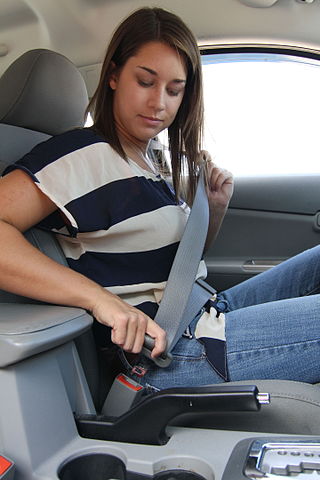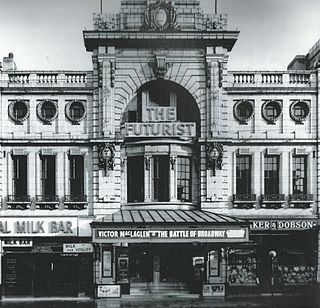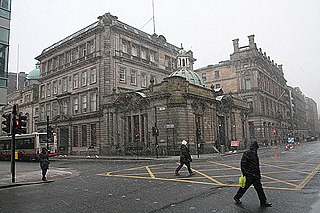
A seat belt, also known as a safety belt or spelled seatbelt, is a vehicle safety device designed to secure the driver or a passenger of a vehicle against harmful movement that may result during a collision or a sudden stop. A seat belt reduces the likelihood of death or serious injury in a traffic collision by reducing the force of secondary impacts with interior strike hazards, by keeping occupants positioned correctly for maximum effectiveness of the airbag, and by preventing occupants being ejected from the vehicle in a crash or if the vehicle rolls over.

Neil Leslie Diamond is an American singer-songwriter. He has sold more than 130 million records worldwide, making him one of the best-selling musicians of all time. He has had ten No. 1 singles on the U.S. Billboard Hot 100 and Adult Contemporary charts: "Cracklin' Rosie", "Song Sung Blue", "Longfellow Serenade", "I've Been This Way Before", "If You Know What I Mean", "Desirée", "You Don't Bring Me Flowers", "America", "Yesterday's Songs", and "Heartlight". Thirty-eight songs by Diamond have reached the top 10 on the Billboard Adult Contemporary charts, including "Sweet Caroline". He has also acted in films, making his screen debut in the 1980 musical drama film The Jazz Singer.
A public service announcement (PSA) is a message in the public interest disseminated by the media without charge to raise public awareness and change behavior. In the UK, they are generally called a public information film (PIF); in Hong Kong, they are known as an announcement in the public interest (API).

Road traffic safety refers to the methods and measures used to prevent road users from being killed or seriously injured. Typical road users include pedestrians, cyclists, motorists, vehicle passengers, and passengers of on-road public transport.

Defensive driving describes the practice of anticipating dangerous situations, despite adverse conditions or the mistakes of others when operating a motor vehicle. It can be achieved by adhering to general guidelines, such as keeping a two- or three-second gap between the driver's vehicle and the vehicle in front to ensure adequate space to stop. It is a form of training for drivers that goes beyond road rules and the basic mechanics of driving techniques. Defensive driving reduces the risk of collisions and improves road safety.

The Advertising Council, commonly known as the Ad Council, is an American nonprofit organization that produces, distributes, and promotes public service announcements on behalf of various sponsors, including nonprofit organizations, non-governmental organizations and agencies of the United States government.
Public information films (PIFs) are a series of government-commissioned short films, shown during television advertising breaks in the United Kingdom. The name is sometimes also applied, faute de mieux, to similar films from other countries, but the US equivalent is the public service announcement (PSA). Public information films were commonplace from the 1950s until the 2000s. However, they became obsolete with the closure of the Central Office of Information.
Julie, also known as Julie knew her killer, is the title of a British public information film (PIF) about the importance of wearing a seatbelt in the rear of a car. It ran on national television from 1998 to 2003, and was so successful it was also shown in France, Germany and Australia, as well as being remade by Royal Dutch Shell for broadcast in Libya.
The Transport Accident Commission (TAC) is the statutory insurer of third-party personal liability for road accidents in the State of Victoria, Australia. It was established under the Transport Accident Act 1986.

A pre-flight safety briefing is a detailed explanation given before take-off to airline passengers about the safety features of the aircraft they are aboard.
European Road Assessment Programme (EuroRAP) is an international nonprofit (vzw) organisation registered in Belgium. It operates from Worting House, Basingstoke, Hampshire.

A traffic collision, also known as a motor vehicle collision, occurs when a vehicle collides with another vehicle, pedestrian, animal, road debris, or other moving or stationary obstruction, such as a tree, pole or building. Traffic collisions often result in injury, disability, death, and property damage as well as financial costs to both society and the individuals involved. Road transport is the most dangerous situation people deal with on a daily basis, but casualty figures from such incidents attract less media attention than other, less frequent types of tragedy. The commonly used term car accident is increasingly falling out of favor with many government departments and organizations, with the Associated Press style guide recommending caution before using the term. Some collisions are intentional vehicle-ramming attacks, staged crashes, vehicular homicide or vehicular suicide.
Ontario Students Against Impaired Driving (OSAID) is an anti-impaired driving initiative which is found across the province of Ontario, Canada, aimed primarily at youth involvement in combating impaired driving. It was founded in 1987 and encourages the student population to practice responsible choices and to never to drive while impaired. OSAID chapter members regularly hold awareness raising activities, such as mocktail sales or events aimed at raising awareness about the dangers of driving while impaired.

The fire services in the United Kingdom use motorcycles in various roles. A number of fire and rescue services around the UK use fire motorcycles to deliver road safety messages. From 2005, Merseyside fire service deployed a motorcycle in an automatic alarm response role, and from 2007 they have used two quad-bikes for public information campaigns. In 2010, Merseyside became the first fire service in the UK to use fire motorcycles as an actual fire appliance, to be used to fight small fires. Having been deployed in a six-month trial, if found successful they could be deployed to other services nationally.

Luchemos por la Vida is a nonprofit organization whose purpose is to help prevent traffic accidents in Argentina. It promotes road traffic safety and focuses on contributing to safe traffic behavior. The organization does not receive financial support from government agencies and is mainly held together by volunteers, private firms, and community servicemen. In 2010, statistics showed that approximately 21 deaths occurred per day in Argentina along with 100,000 injured and severe vehicle damage caused by traffic incidents.

Traffic collisions in India are a major source of deaths, injuries and property damage every year. The National Crime Records Bureau (NCRB) 2021 report states that there were 155,622 fatalities, highest since 2014, out of which 69,240 deaths were due to two-wheelers. A study by Insurance Institute for Highway Safety, U.S. shows that the use of seat belts significantly reduces the risks and injuries from road accidents, and yet there is no enforcement on use of seat belts in cars. A study by IIT Delhi points out that the national highways constitute only 2% of the length of roads in India, but they account for 30.3% of total road accidents and 36% of deaths.

The Futurist Cinema was a cinema located in Lime Street, Liverpool. Opened as Lime Street Picture House in 1912, the cinema operated until closing in 1982. Unable to find a new owner it was left to decline. It was demolished in 2016 after a court battle over the controversial plans for redevelopment of the area.

People who are driving as part of their work duties are an important road user category. First, workers themselves are at risk of road traffic injury. Contributing factors include fatigue and long work hours, delivery pressures, distractions from mobile phones and other devices, lack of training to operate the assigned vehicle, vehicle defects, use of prescription and non-prescription medications, medical conditions, and poor journey planning. Death, disability, or injury of a family wage earner due to road traffic injury, in addition to causing emotional pain and suffering, creates economic hardship for the injured worker and family members that may persist well beyond the event itself.

The Green Cross Code is a brand created by the National Road Safety Committee to raise awareness of pedestrian road safety in the United Kingdom. The multimedia Green Cross Code campaign began in 1970 and continues today.
















